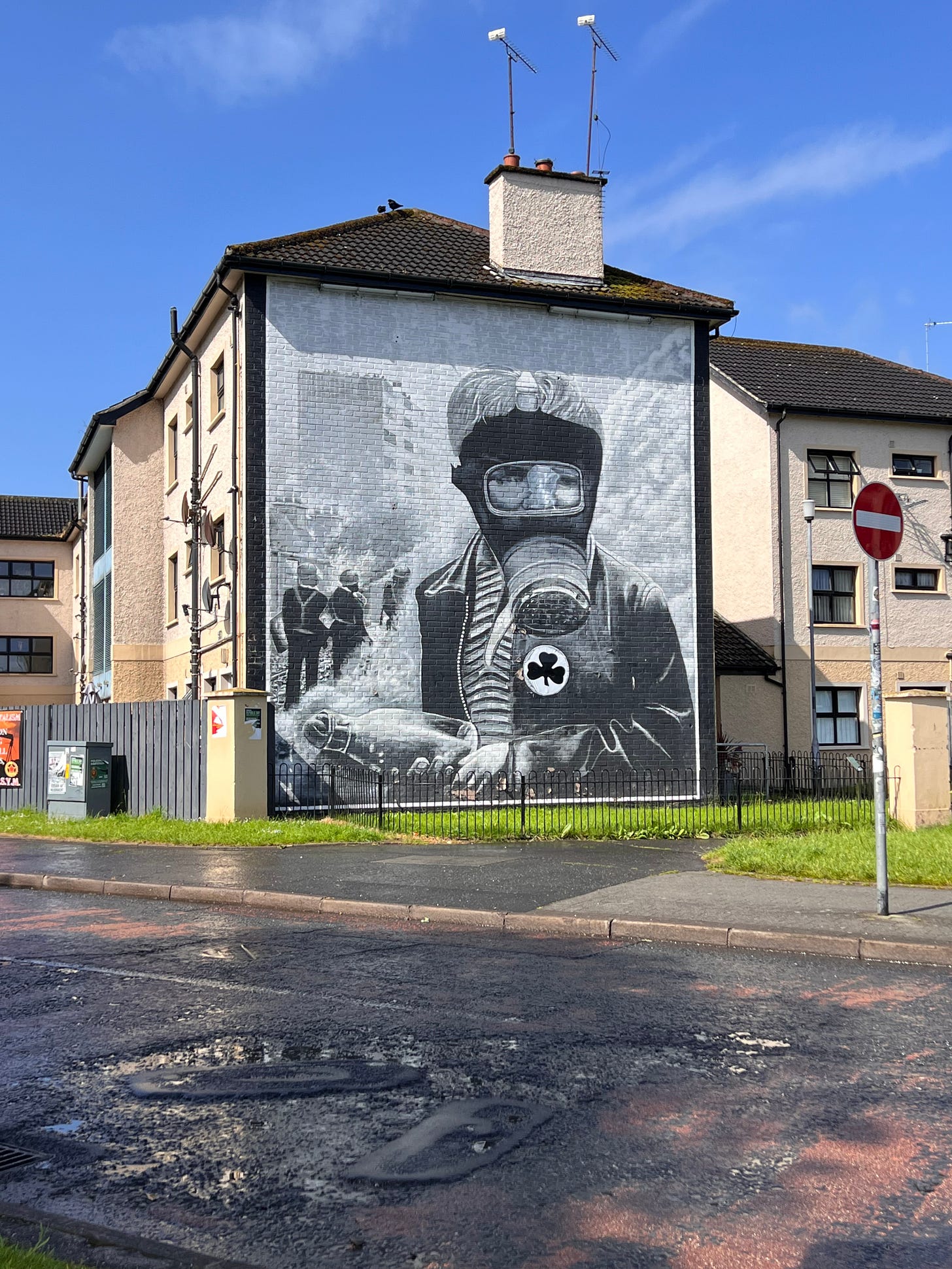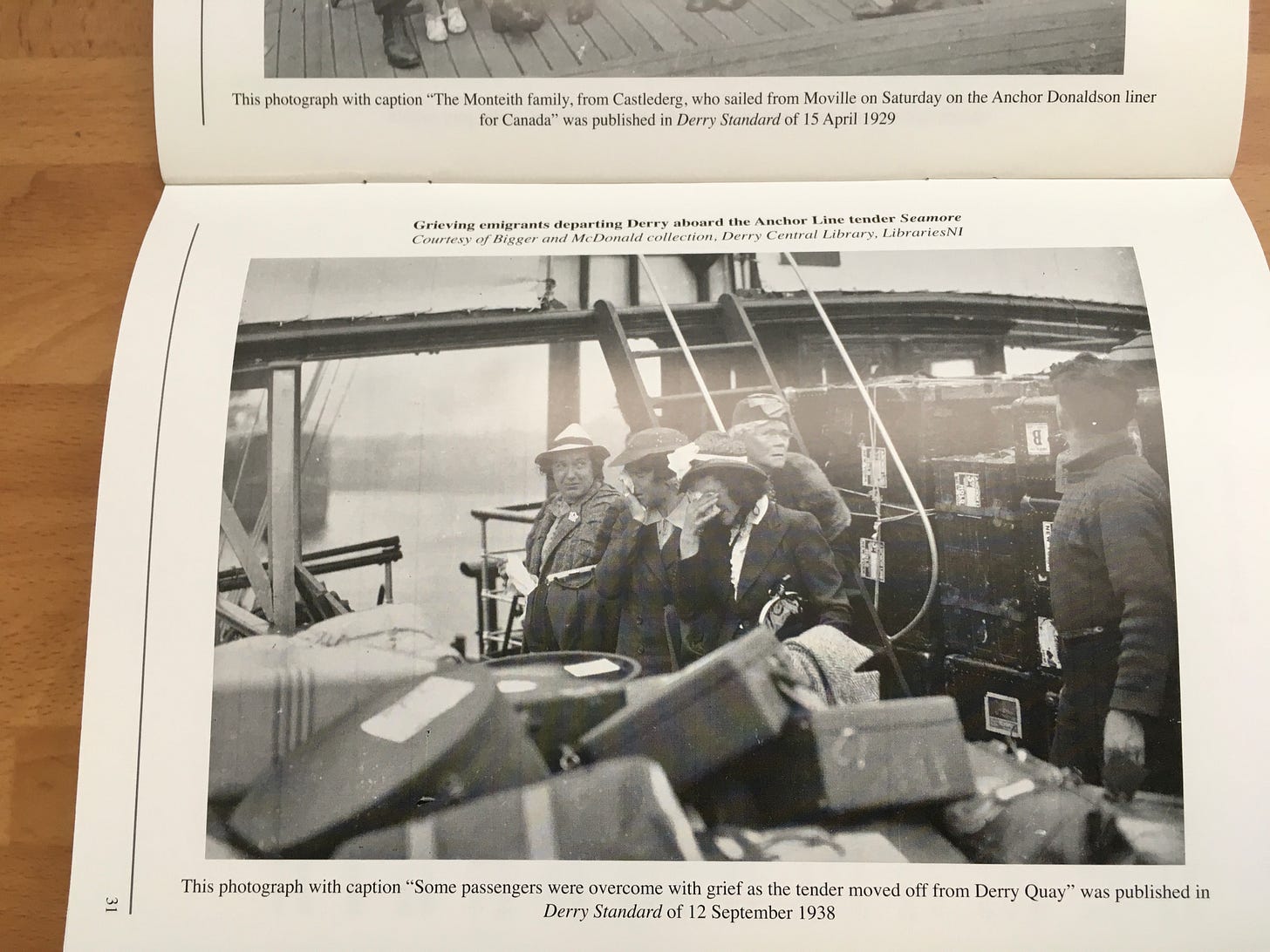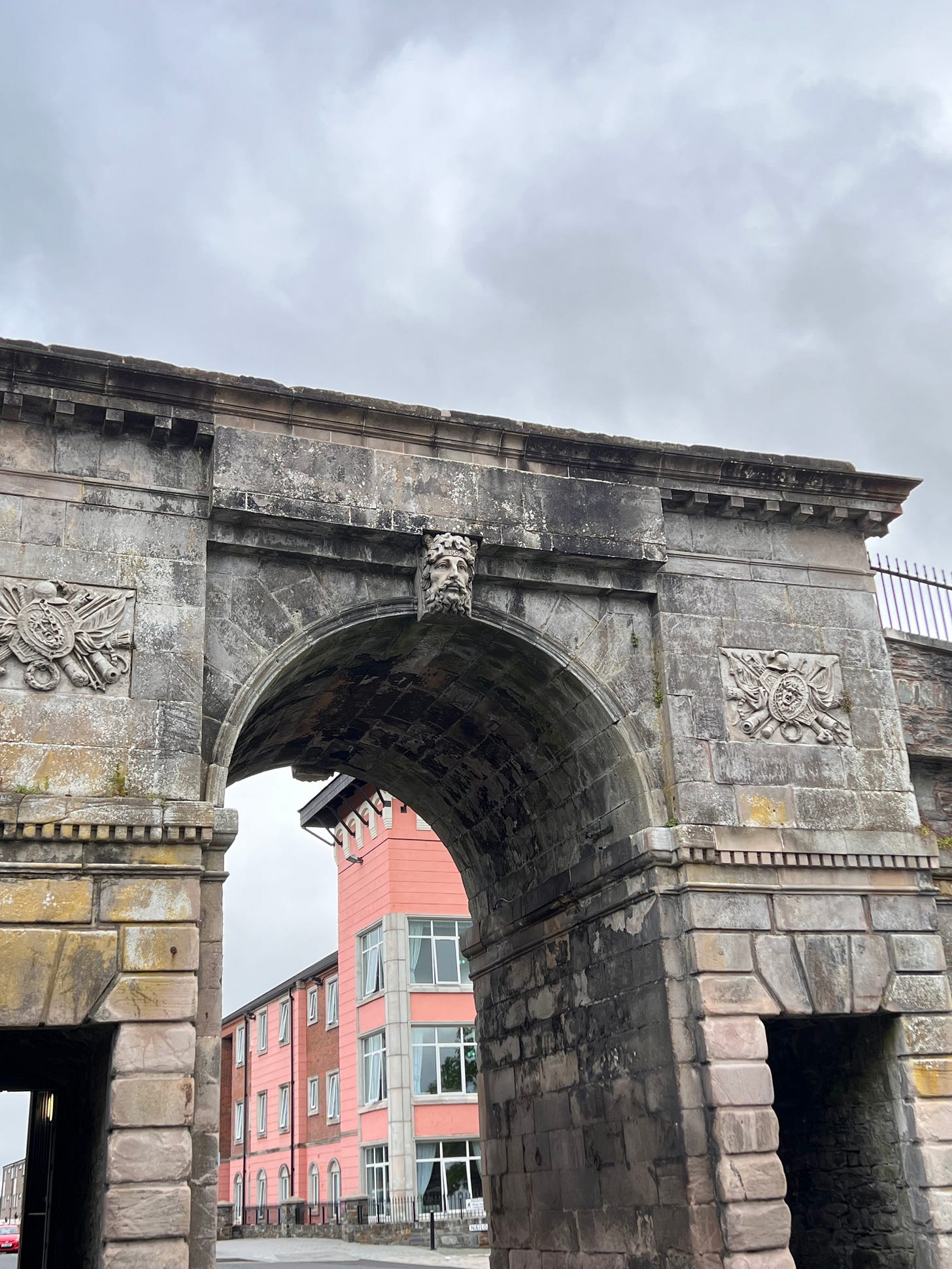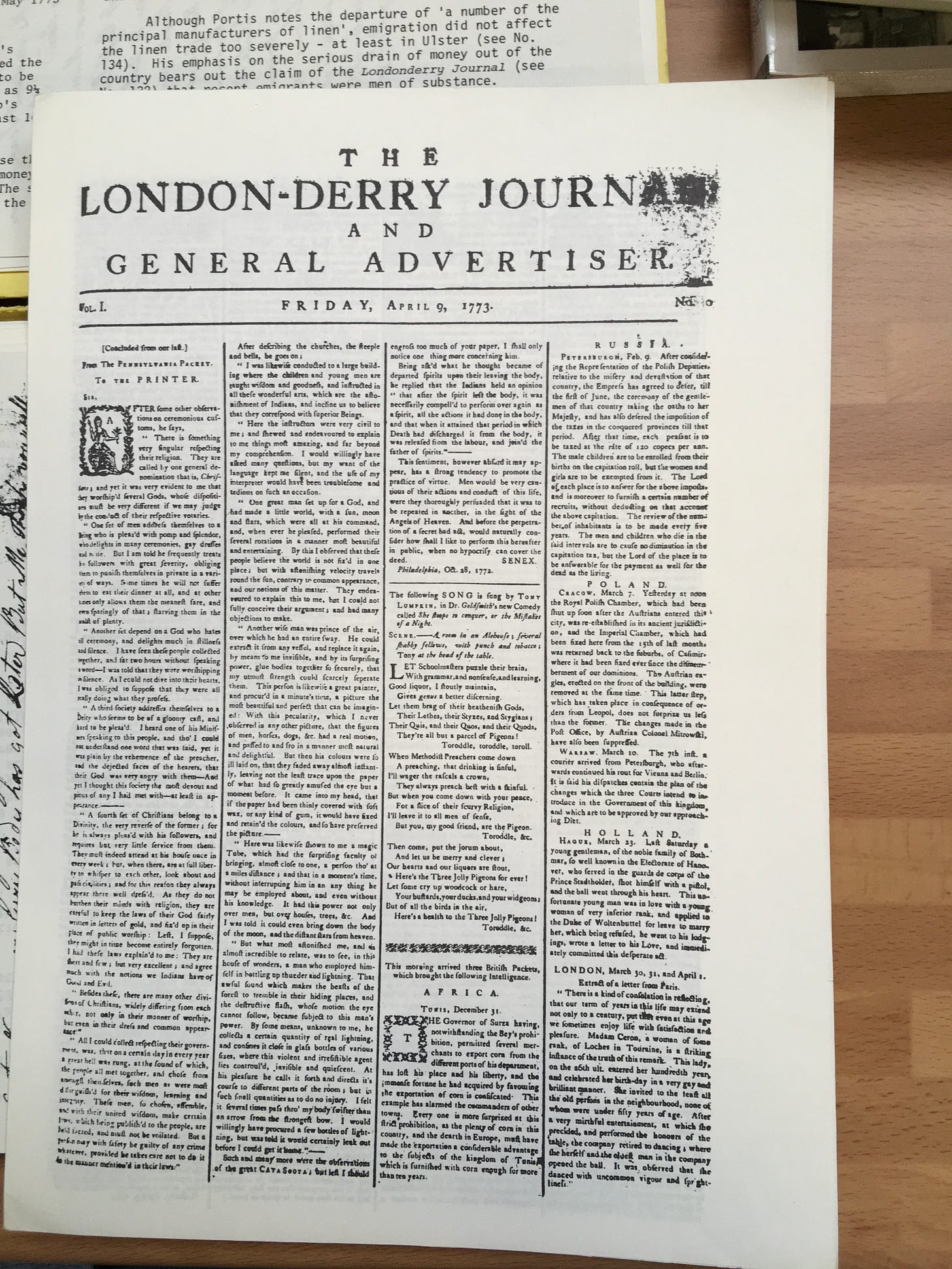Research at the Derry Central Library
History, History, History in Northern Ireland
Mural in Derry, Northern Ireland
I began my research trip in Derry at the Central library—a low slung, newish, red brick building. With little in the way of primary sources but quite a nice reference section. It seemed a good way to ease myself into looking at what sources Northern Ireland might hold on emigration in the years 1785-1820.
Derry was an important hub for emigration in these early years, particularly to North America. Economic hardship, driven by declining linen industries and agricultural struggles, coupled with religious and political tensions, prompted many to seek better opportunities abroad. The Ulster Scots, in particular, were a prominent group among these emigrants. The journey was perilous, often involving cramped conditions on ships known as "coffin ships" due to high mortality rates. Despite these challenges, many emigrants from Derry established new communities in the United States and Canada, contributing to the diaspora that has significantly shaped both American and Irish histories.
Immigrants in the 1930s.
I contacted the librarians at Derry Central about a month before my trip, asking them what holdings they might have. They arranged to pull books and vertical file folders for me so that they were waiting when I arrived. Not all the materials directly related, such as the book with images above that showed immigrants leaving Derry in 1938, but background information like that does help to illustrate how important Derry was as a center of immigration for over two hundred years.
Using a small iPad, I photographed all the documents, images, and book pages that seemed relevant, knowing I’d have time to process them all when I returned. I also went through their genoalogical section and found some books that I’d order to read later on. Time is brief in libraries and archives and taking photos is one way to maximize that research time.
A few hours later, I emerged from the library and turned the corner to find the new Derry Girls mural. If you haven’t watched the show, it’s excellent—the writer and producer has woven the recent history of Derry into a funny and dynamic tale of five young kids just trying to get through each day when the IRA and British troops were facing off all around them.
The Derry Girls murual
The long history of Derry is everywhere. From the recent past—murals line the streets in Bogside—to the ancient city walls that surround the central part of the city. There is definitely a sense of place that’s inescapable.
A section of the city wall
The library held some copies of the London-Derry Journal, an important source of information for the emigration researcher. The newspaper advertised places on ships, enticing people to book a passage and informing them when and where they could expect to commence their journey. This edition was from April 1773.
The London-Derry Journal, April 1773.
And if you are wondering—is the city called Derry or Londonderry? Well, both. If you are Irish or Irish Catholic, it was Derry—the original name for the city. Derry means “a hill covered with oak trees.” Then the British came and invaded Ireland and renamed Derry to Londonderry City. So if you were British or Irish Protestant, you’d have said Londonderry. People still refer to the city both ways. And while a huge amount of progress has been made in reuniting this divided city, the divide can still be felt.
Sadly, I barely missed the day the city broke the Guiness world record for number of people in the street doing the “Rock the Boat.” If I’d realized it was happening, there would have been 1,889 people that day. Another kind of “history” making day in Derry.
From the Derry Journal: “A verified total of 1,888 people lined Shipquay Street and hundreds more spectated in Saturday’s record attempt in the Maiden City which breaks the current record of 1,809 people set in Salthill Promenade in Galway in 2019.”







